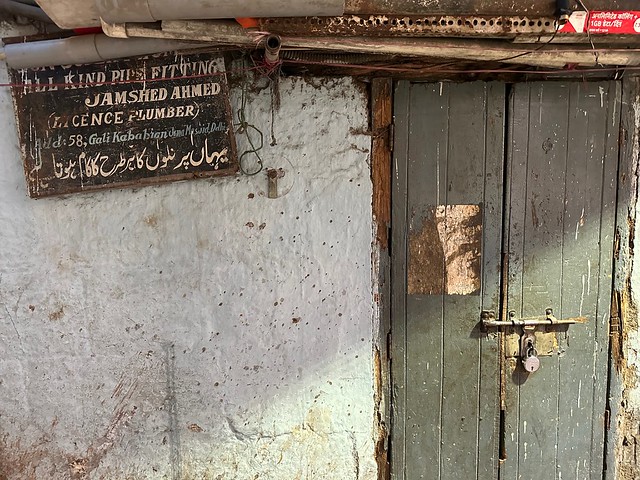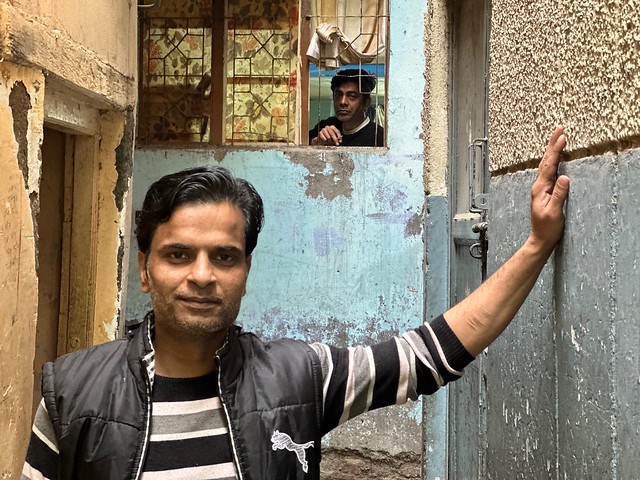
City Walk – Gali Kebabiyan, Old Delhi

The lane of kebab makers.
[Text and photos by Mayank Austen Soofi]
People step into this lane for nihari and biryani, for burra and korma—all to be had at the “world-famous” Karim’s restaurant. Those in the know wade deeper, to have the zaikedar haleem at Naimuddin’s, just around the corner. Nobody cares for the poor kebab. And this is Gali Kebabiyan.
“This street was exclusively the rehaish (residence) of kebab wale,” mutters mechanic Zaheer Ahmad. A gali resident, he is gossiping with friends outside a shuttered storefront. “Back then, the Kebabiyan’s kebab wale made seekh kebabs as long as this,” he says, measuring half his arm. Following the Batwara (Partition), he goes on, all the kebab wale of Kebabiyan moved to Pakistan. All but two families, who continue their tradition of making kebabs: Abdul Ghani Qureshi Kebab Corner in Urdu Bazar, and Raees Kebab Corner in Matia Mahal Bazar. As for the scores of kebab stall owners facing the Jama Masjid, the mechanic describes them, respectfully, as relatively new migrants from UP.
Since the “world-famous” Mughlai eatery is tucked almost at the mouth of Kebabiyan, tourists never go beyond it. Their loss, for this is one of Old Delhi’s most atmospheric streets. The lane begins on the Matia Mahal Bazar road in the form of a short tunnel, that opens into daylight and air. It then narrows, crammed by walls lacquered in the patina of several seasons. Thereafter, it widens again into light and air. Here is Naimuddin’s stall. He cooks his haleem by a small mosque. “You can see me on YouTube,” he cries.
The street’s true intimacies begins from this point. Both sides are punctuated with long flights of staircases going up into curtained dwellings that once housed kebab cooks, and now house citizens from a wider band of backgrounds. Oftentimes, these residents stand behind their windows, boldly staring at the passersby (see photo).
A short distance ahead, close to the street’s dead-end impasse, a man emerges from a door. He turns out to be one of the only two kebab makers of Kebabiyan. “My pardada’s dada (great-grandfather’s grandfather) was Habban kebabi. He settled here during the reign of Bahadur Shah Zafar, the last badshah,” informs Naushad Qureshi, modestly. Agreeing to pose for a portrait, he confirms that “one day my two kids will pick up the family line.” He now hastens out of Kebabiyan, towards the direction of his kebab shop, outside, in Matia Mahal.
A street in the old city
1.
2.
3.
4.
5.
6.
7.
8.









Recent Comments